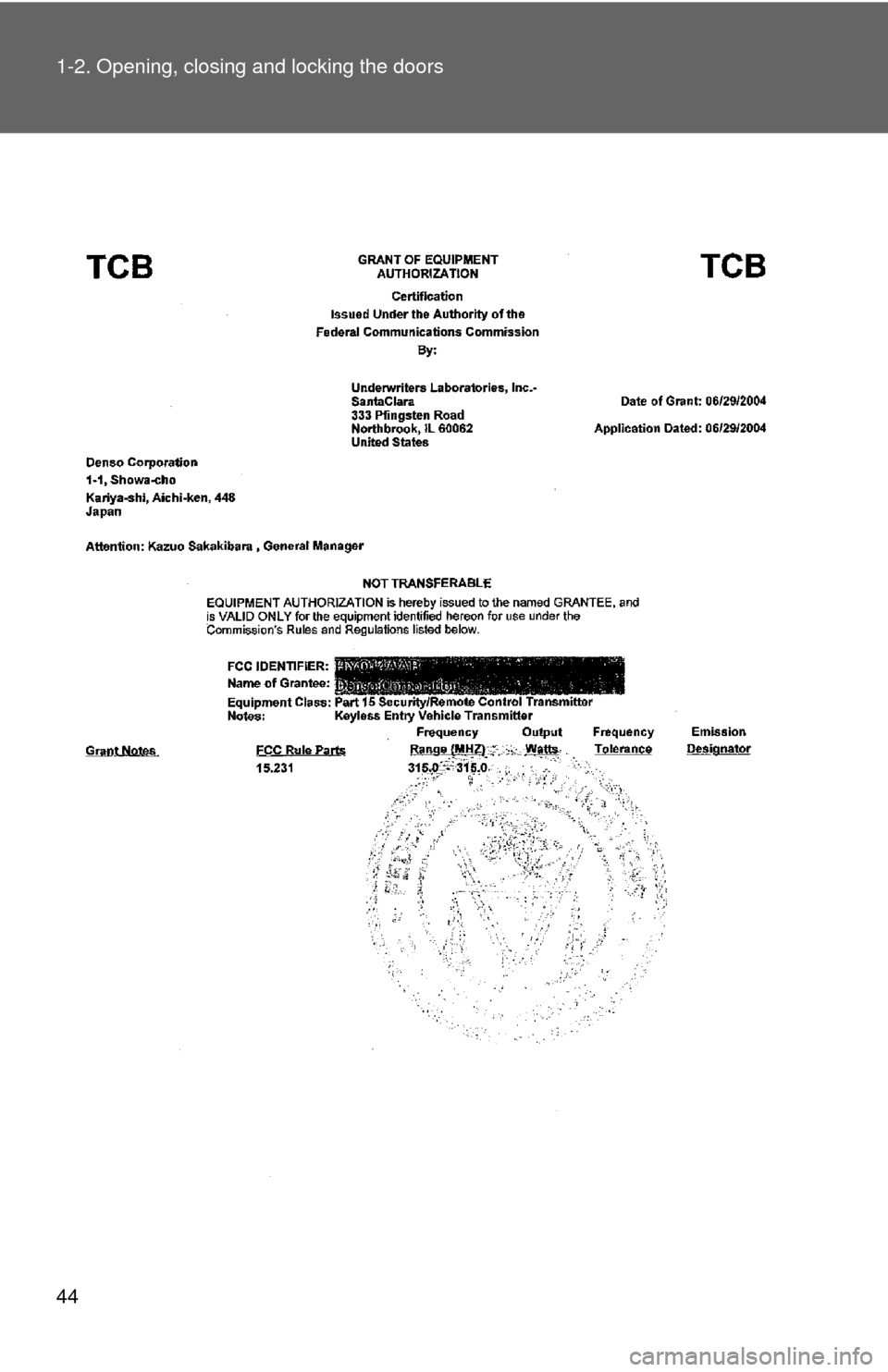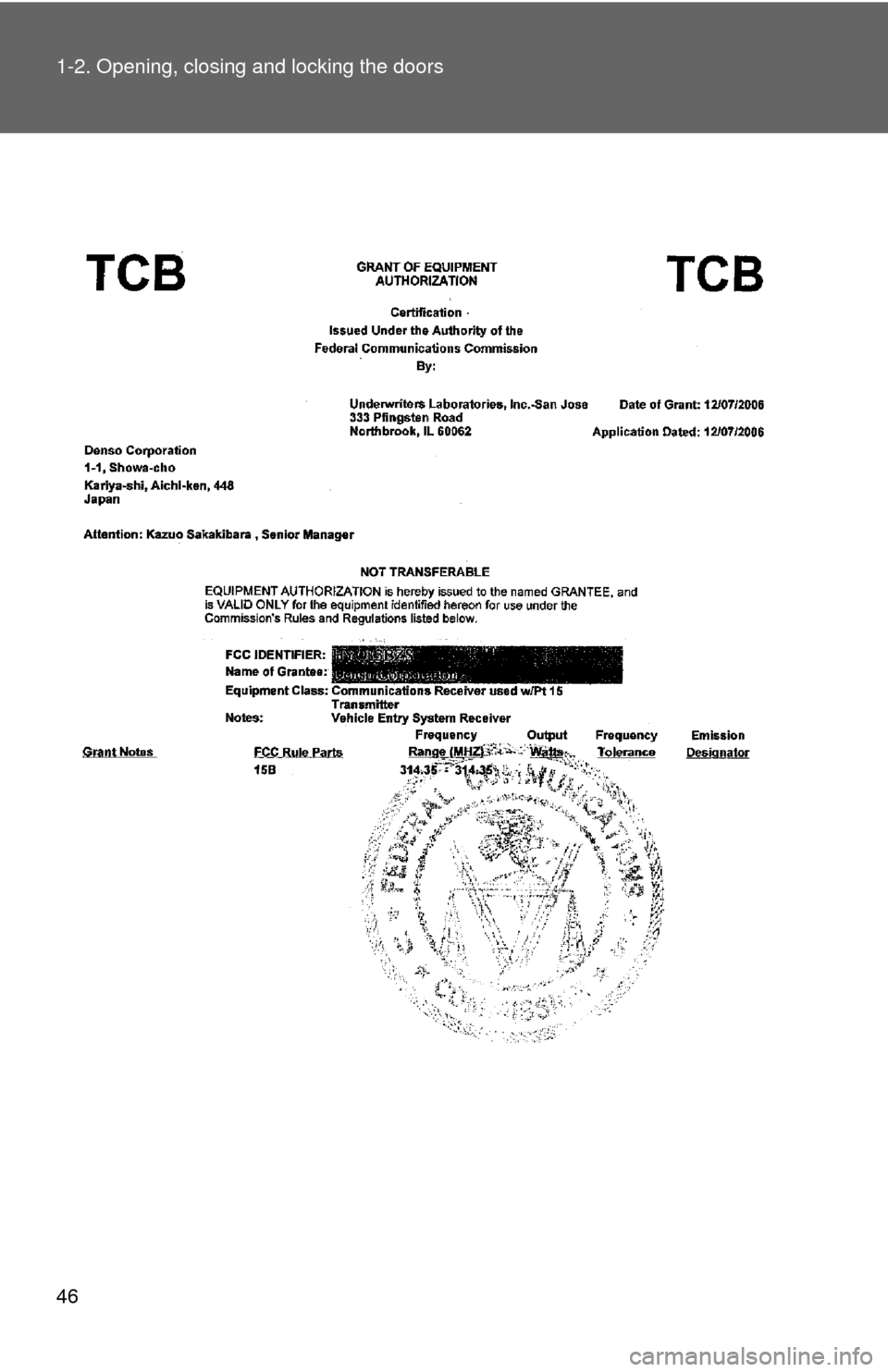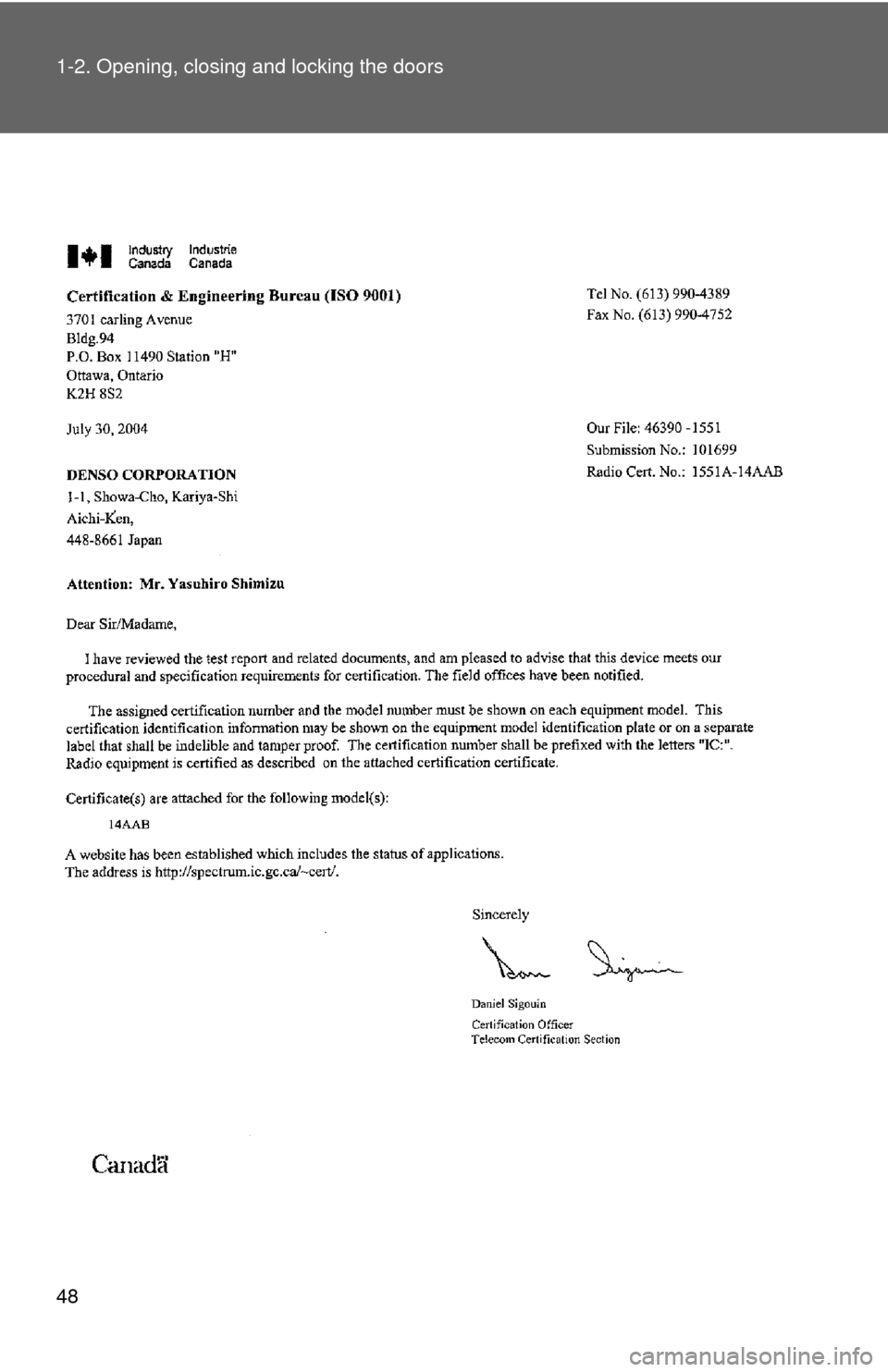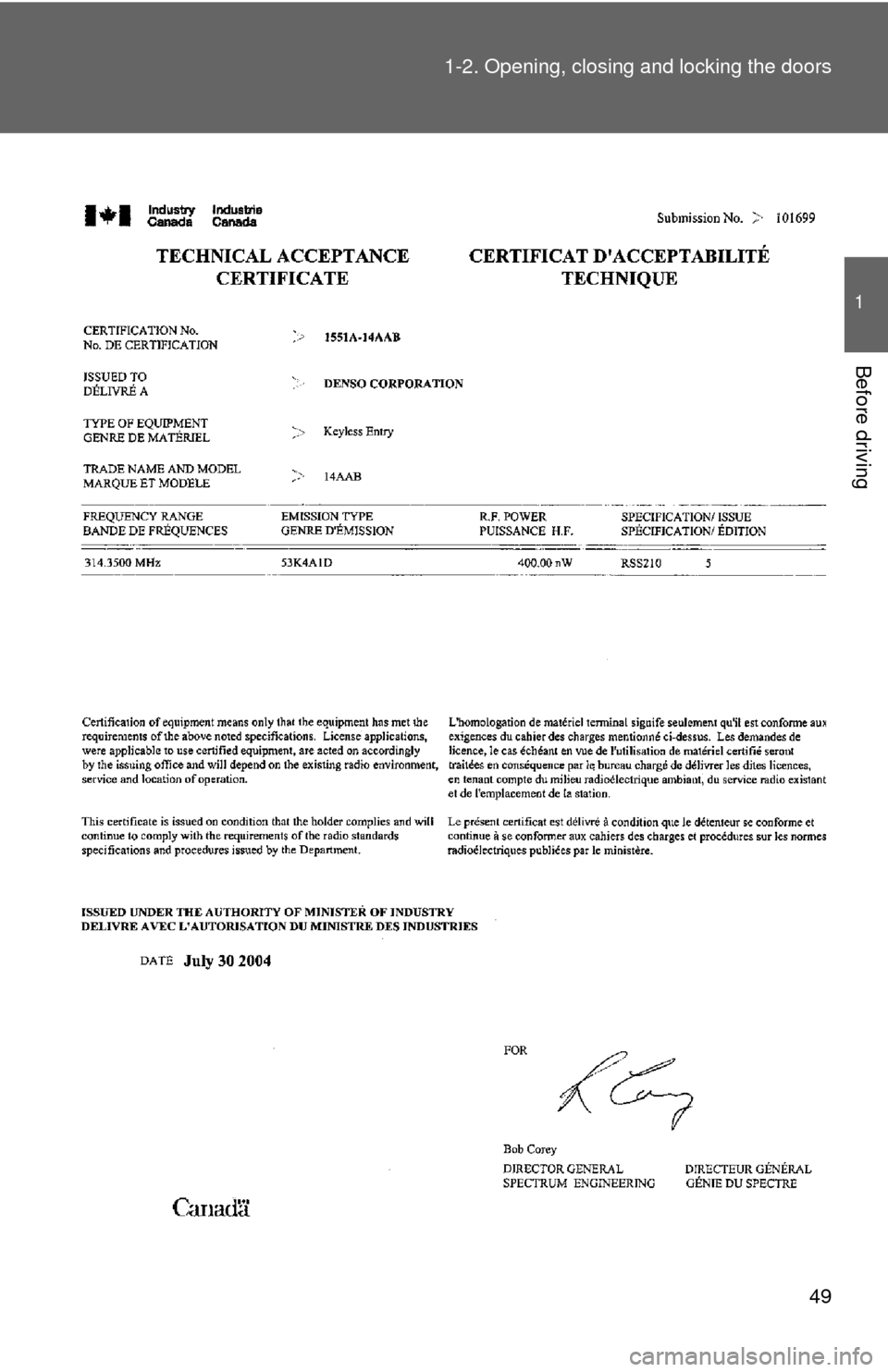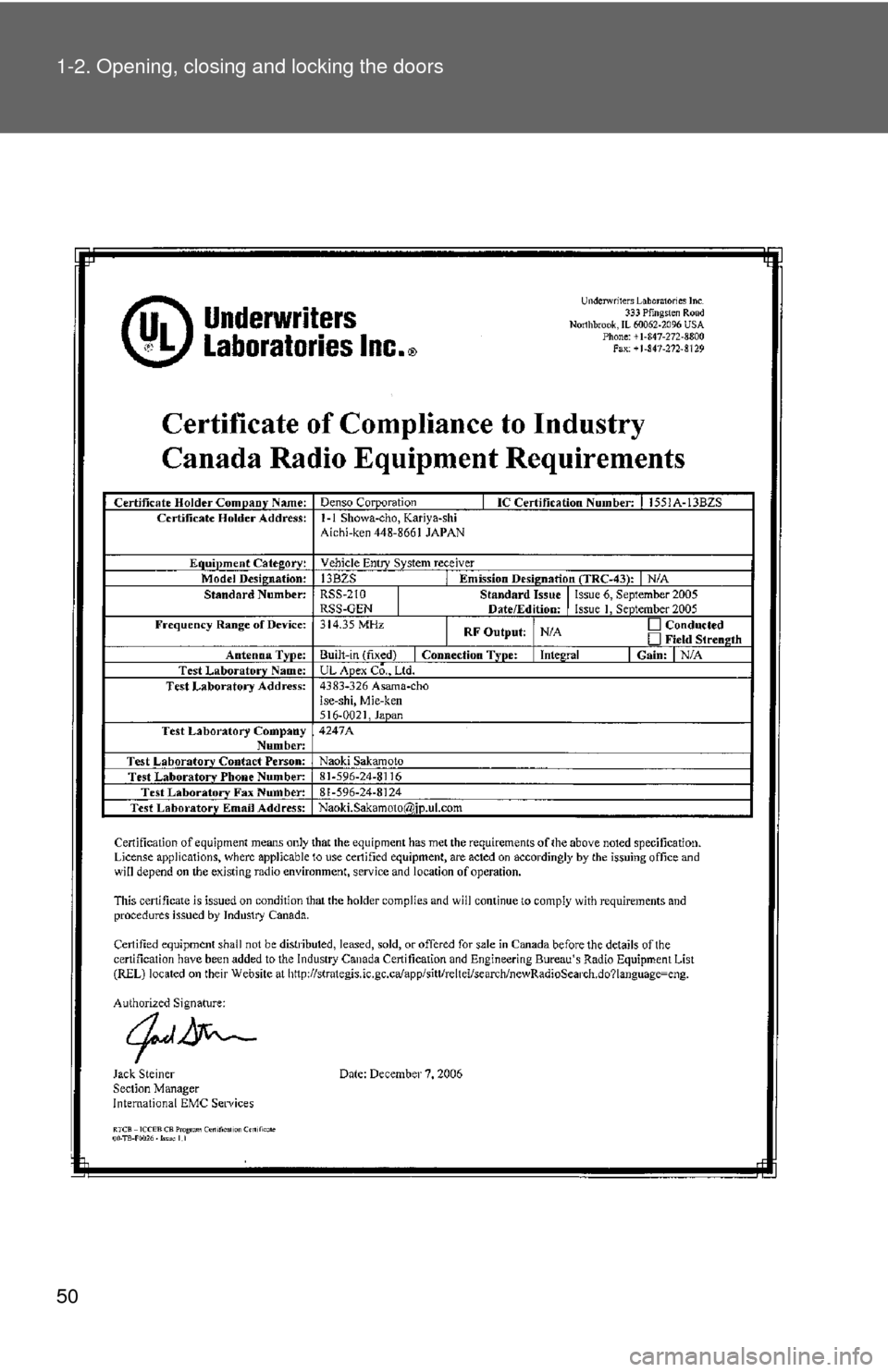TOYOTA HIGHLANDER 2008 XU40 / 2.G Service Manual
HIGHLANDER 2008 XU40 / 2.G
TOYOTA
TOYOTA
https://www.carmanualsonline.info/img/14/6395/w960_6395-0.png
TOYOTA HIGHLANDER 2008 XU40 / 2.G Service Manual
Trending: fog light, suspension, wiper size, buttons, coolant level, warning, power steering fluid
Page 41 of 577
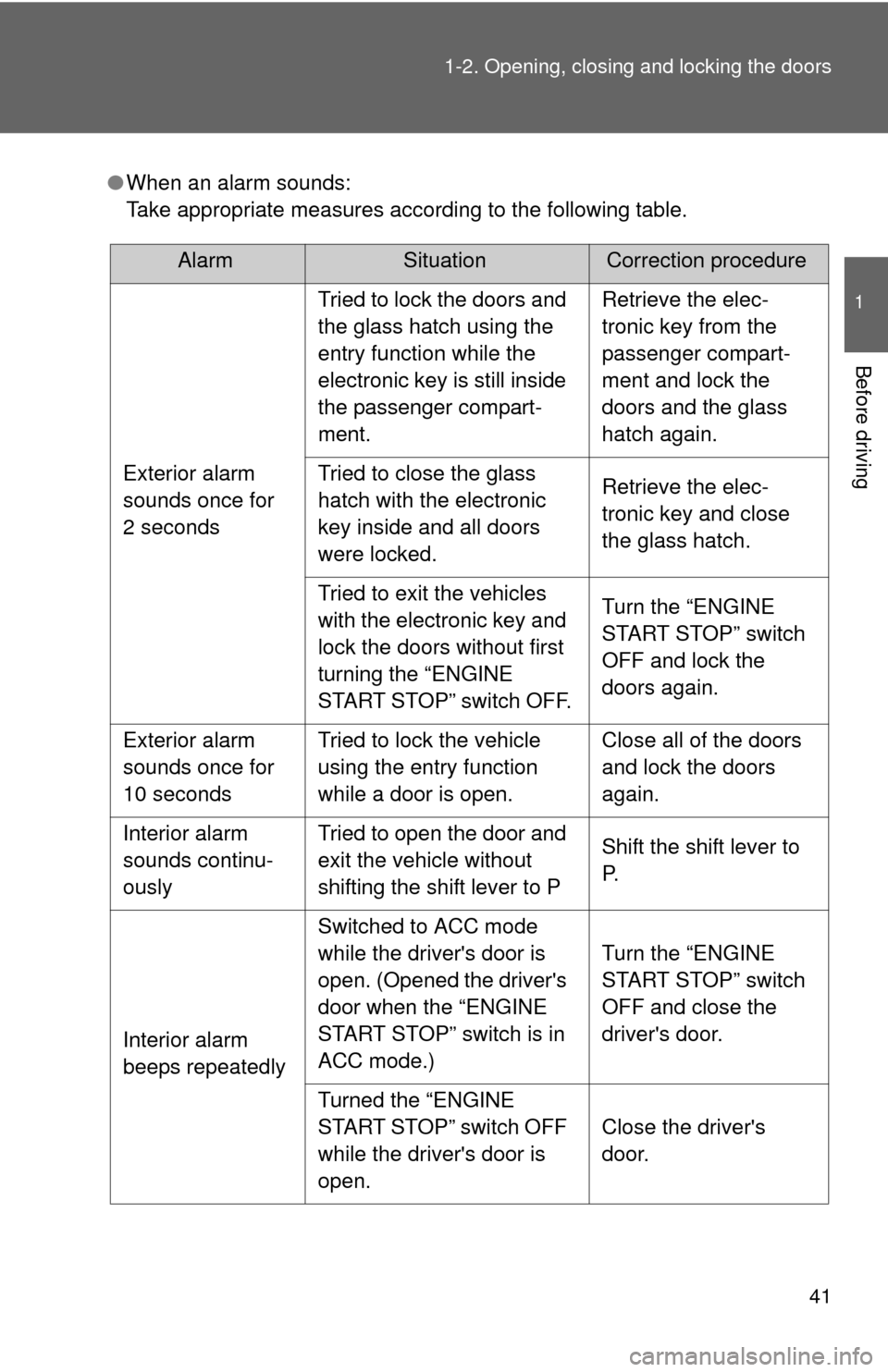
41
1-2. Opening, closing and locking the doors
1
Before driving
●
When an alarm sounds:
Take appropriate measures according to the following table.
AlarmSituationCorrection procedure
Exterior alarm
sounds once for
2 seconds Tried to lock the doors and
the glass hatch using the
entry function while the
electronic key is still inside
the passenger compart-
ment.
Retrieve the elec-
tronic key from the
passenger compart-
ment and lock the
doors and the glass
hatch again.
Tried to close the glass
hatch with the electronic
key inside and all doors
were locked. Retrieve the elec-
tronic key and close
the glass hatch.
Tried to exit the vehicles
with the electronic key and
lock the doors without first
turning the “ENGINE
START STOP” switch OFF. Turn the “ENGINE
START STOP” switch
OFF and lock the
doors again.
Exterior alarm
sounds once for
10 seconds Tried to lock the vehicle
using the entry function
while a door is open. Close all of the doors
and lock the doors
again.
Interior alarm
sounds continu-
ously Tried to open the door and
exit the vehicle without
shifting the shift lever to P
Shift the shift lever to
P.
Interior alarm
beeps repeatedly Switched to ACC mode
while the driver's door is
open. (Opened the driver's
door when the “ENGINE
START STOP” switch is in
ACC mode.)
Turn the “ENGINE
START STOP” switch
OFF and close the
driver's door.
Turned the “ENGINE
START STOP” switch OFF
while the driver's door is
open. Close the driver's
door.
Page 42 of 577
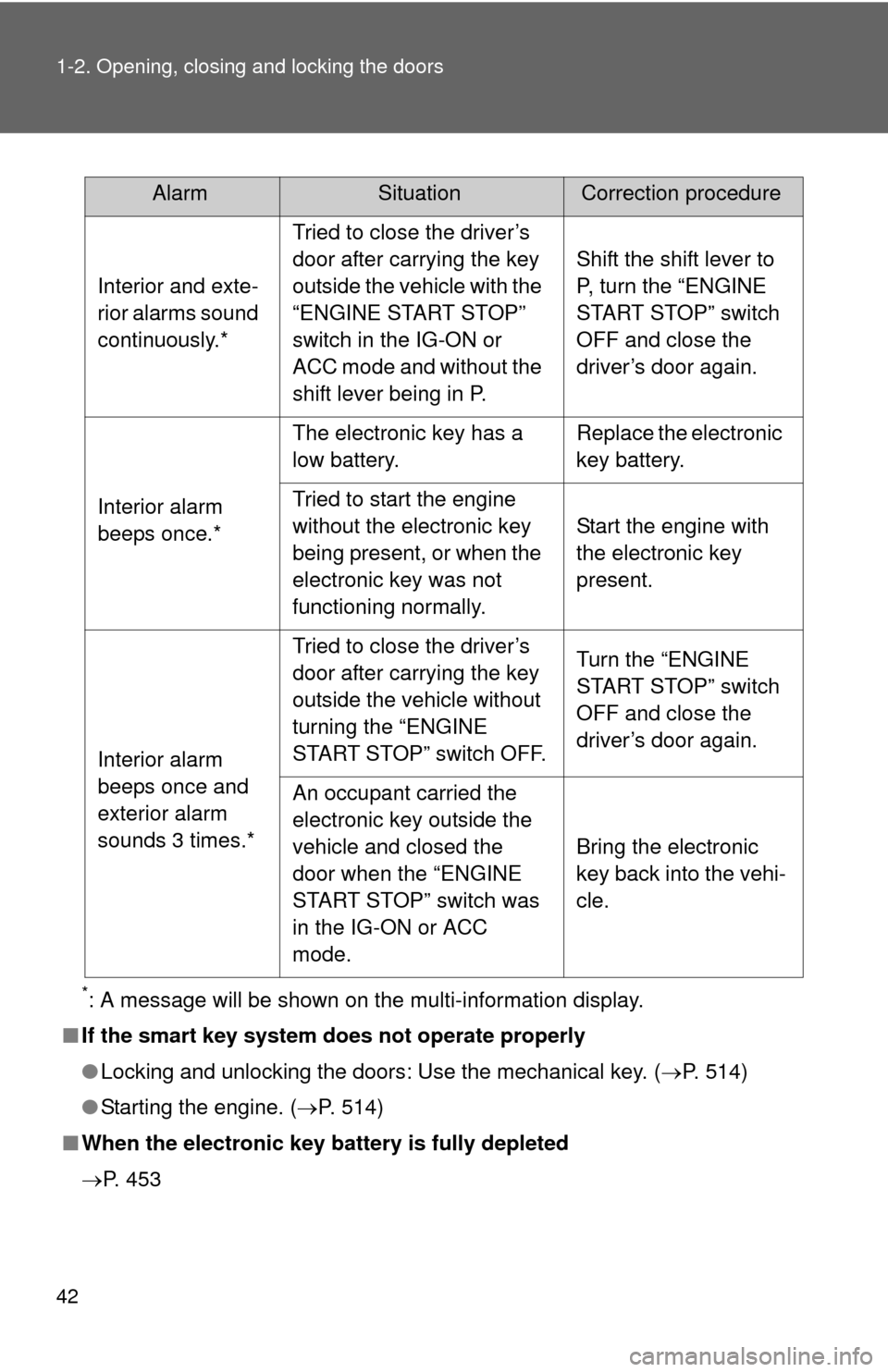
42 1-2. Opening, closing and locking the doors
*: A message will be shown on the multi-information display.
■ If the smart key system does not operate properly
● Locking and unlocking the doors: Use the mechanical key. ( P. 514)
● Starting the engine. ( P. 514)
■ When the electronic key battery is fully depleted
P. 453
AlarmSituationCorrection procedure
Interior and exte-
rior alarms sound
continuously.* Tried to close the driver’s
door after carrying the key
outside the vehicle with the
“ENGINE START STOP”
switch in the IG-ON or
ACC mode and without the
shift lever being in P. Shift the shift lever to
P, turn the “ENGINE
START STOP” switch
OFF and close the
driver’s door again.
Interior alarm
beeps once.* The electronic key has a
low battery.
Replace the electronic
key battery.
Tried to start the engine
without the electronic key
being present, or when the
electronic key was not
functioning normally. Start the engine with
the electronic key
present.
Interior alarm
beeps once and
exterior alarm
sounds 3 times.* Tried to close the driver’s
door after carrying the key
outside the vehicle without
turning the “ENGINE
START STOP” switch OFF.
Turn the “ENGINE
START STOP” switch
OFF and close the
driver’s door again.
An occupant carried the
electronic key outside the
vehicle and closed the
door when the “ENGINE
START STOP” switch was
in the IG-ON or ACC
mode. Bring the electronic
key back into the vehi-
cle.
Page 43 of 577

43
1-2. Opening, closing and locking the doors
1
Before driving
■
Customization that can be co nfigured at Toyota dealer
It is possible to deactivate the smart key system etc.
(Customizable features P. 554)
■ Certification for the smart key system
For vehicles sold in the U.S.A.
NOTE:
This device complies with Part 15 of the FCC Rules. Operation is subject to
the following two conditions: (1) This device may not cause harmful interfer-
ence, and (2) this device must accept any interference received, including
interference that may cause undesired operation.
NOTICE:
This equipment has been tested and found to comply with the limits for a
Class B digital device, pursuant to Part 15 of the FCC Rules. These limits
are designed to provide reasonable protection against harmful interference
in a residential installation. This equipment generates, uses and can radiate
radio frequency energy and, if not installed and used in accordance with the
instructions, may cause harmful interference to radio communications. How-
ever, there is no guarantee that interference will not occur in a particular
installation. If this equipment does cause harmful interference to radio or
television reception, which can be determined by turning the equipment off
and on, the user is encouraged to try to correct the interference by one or
more of the following measures:
● Reorient or relocate the receiving antenna.
● Increase the separation between the equipment and receiver.
● Connect the equipment into an outlet on a circuit different from that to
which the receiver is connected.
● Consult the dealer or an experienced radio/TV technician for help.
FCC WARNING:
Changes or modifications not expressly approved by the party responsible
for compliance could void the user's authority to operate the equipment.
FCC ID: NI4TMLF-3
Page 44 of 577
44 1-2. Opening, closing and locking the doors
Page 45 of 577
45
1-2. Opening, closing and locking the doors
1
Before driving
Page 46 of 577
46 1-2. Opening, closing and locking the doors
Page 47 of 577
47
1-2. Opening, closing and locking the doors
1
Before driving
For vehicles sold in Canada
NOTE:
Operation is subject to the following two conditions: (1) this device may not
cause interference, and (2) this device must accept any interference, includ-
ing interference that may cause undesired operation of the device.
Page 48 of 577
48 1-2. Opening, closing and locking the doors
Page 49 of 577
49
1-2. Opening, closing and locking the doors
1
Before driving
Page 50 of 577
50 1-2. Opening, closing and locking the doors
Trending: airbag, ECU, start stop button, traction control, weight, engine oil, spare tire location



